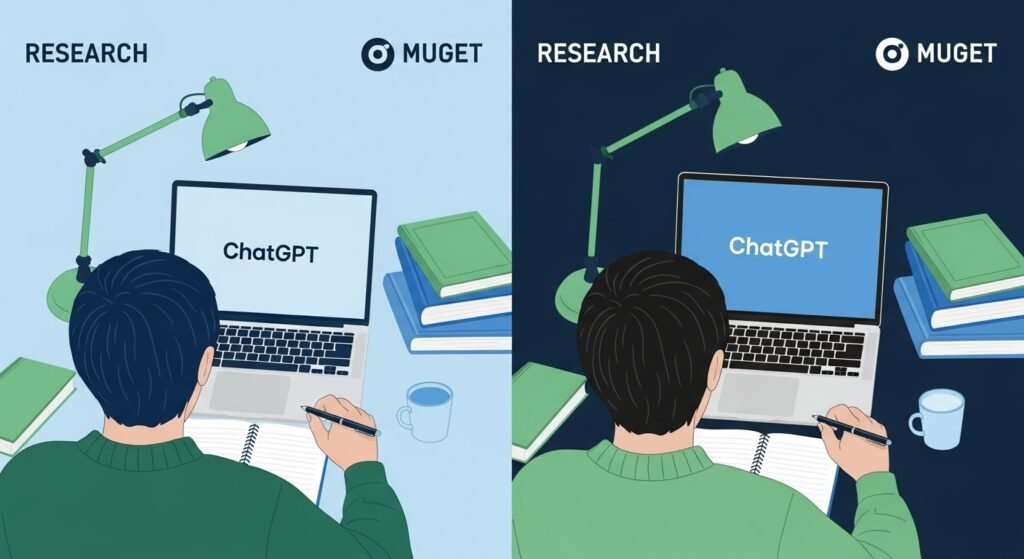Writing essays and assignments can be tough for students. Deadlines pile up, and ideas don’t always flow. ChatGPT, an AI tool by OpenAI, can help with writing tasks like brainstorming, researching, and editing. But it’s not a magic fix. Used wrong, it can lead to plagiarism or weak skills. This guide shows students how to use ChatGPT effectively and ethically. It’s packed with tips, prompts, and tools to improve your writing while keeping your work original. As of July 30, 2025, this advice is up-to-date and designed to help you succeed.

What Is ChatGPT and How Does It Help?
ChatGPT is an AI model that generates text based on your prompts. It uses natural language processing (NLP) to mimic human writing. Students can use it to:
- Brainstorm essay topics or thesis statements.
- Find research keywords or sources.
- Improve sentence clarity or structure.
- Format citations in APA, MLA, or Chicago styles.
However, it’s not perfect. It can give wrong information or unoriginal text. Always check its outputs against reliable sources like academic journals or books.
Why Use ChatGPT Ethically?
Using ChatGPT without care can cause problems. Many schools, like Harvard, have strict rules against AI-written assignments. Overusing it might weaken your critical thinking or writing skills. Plus, it could lead Posted by u/BenAttanasio – 7,129 votes and 323 comments
Key Ethical Tips
- Check School Rules: Some schools ban AI use for assignments. Ask your instructor first.
- Be Transparent: Cite ChatGPT if you use it. OpenAI suggests sharing links to your chats (OpenAI Shared Links FAQ).
- Verify Facts: Cross-check AI outputs with trusted sources to avoid errors.
- Use as a Tool: Focus on brainstorming or editing, not full essay writing.
Learn more about AI detection in academics at Can Canvas Detect ChatGPT?.
How to Use ChatGPT for Writing
Here’s how to make ChatGPT a helpful writing partner without crossing ethical lines.
1. Brainstorming Ideas
ChatGPT can spark ideas for essays or projects.
- Prompt Example: “Suggest five thesis statements for an essay on renewable energy.”
- Tip: Tweak its ideas to fit your unique perspective.
2. Research Support
It can suggest sources or keywords for research.
- Prompt Example: “List five credible sources for studying AI ethics.”
- Tip: Verify sources using Google Scholar or JSTOR.

3. Structuring Your Essay
Ask ChatGPT to review your outline for clarity and flow.
- Prompt Example: “Check if this outline flows logically: [Insert outline].”
- Tip: Use its feedback but keep your own reasoning central.
4. Polishing Your Writing
ChatGPT can make sentences clearer or more concise.
- Prompt Example: “Rephrase this for clarity: [Insert sentence].”
- Tip: Rewrite suggestions to match your voice.
5. Formatting Citations
It can format citations correctly.
- Prompt Example: “Format this source in MLA style: [Insert source details].”
- Tip: Double-check with Purdue OWL.
ChatGPT Prompts for Writing Tasks
| Task | Prompt Example | Tip |
|---|---|---|
| Brainstorming | “Suggest five thesis statements on climate change.” | Adapt ideas to your assignment’s focus. |
| Research | “List keywords for studying AI in education.” | Check sources in academic databases. |
| Structure | “Review this outline for flow: [Insert outline].” | Ensure your reasoning drives the structure. |
| Polishing | “Make this sentence clearer: [Insert sentence].” | Keep your voice in the final text. |
| Citations | “Format this in APA style: [Insert source details].” | Verify with style guides like Purdue OWL. |
Avoiding Common Mistakes
ChatGPT has limits that can trip you up if you’re not careful.
Mistakes to Watch For
- Overuse: Writing full essays with AI can harm your skills and break rules.
- Errors: AI might give outdated or wrong facts, especially on recent topics.
- Unoriginal Text: Outputs may sound generic or mimic existing sources.
- Plagiarism Risk: AI text can flag plagiarism checkers like Turnitin.
How to Avoid Them
- Use ChatGPT for ideas or edits, not final drafts.
- Fact-check with sources like textbooks or peer-reviewed articles.
- Rewrite AI text in your own words.
- Run your work through Grammarly or Turnitin to check originality.
See how to make AI text sound human at How to Humanize ChatGPT Content.
Other Tools to Pair with ChatGPT
ChatGPT isn’t the only way to improve your writing. Try these:
- Library Resources: Use JSTOR or Google Scholar for reliable sources.
- Writing Centers: Most schools offer free tutoring, like the Harvard Writing Center.
- Grammar Tools: Grammarly catches grammar and style issues.
- Citation Tools: Scribbr’s Citation Generator ensures accurate formatting.
Conclusion
ChatGPT can be a great writing tool if used wisely. It helps with ideas, research, and edits, saving you time. But it’s not a shortcut. Stay ethical by checking your school’s rules, citing AI use, and verifying facts. By balancing ChatGPT with your own effort, you’ll write better essays and grow as a writer.
Useful Links:
